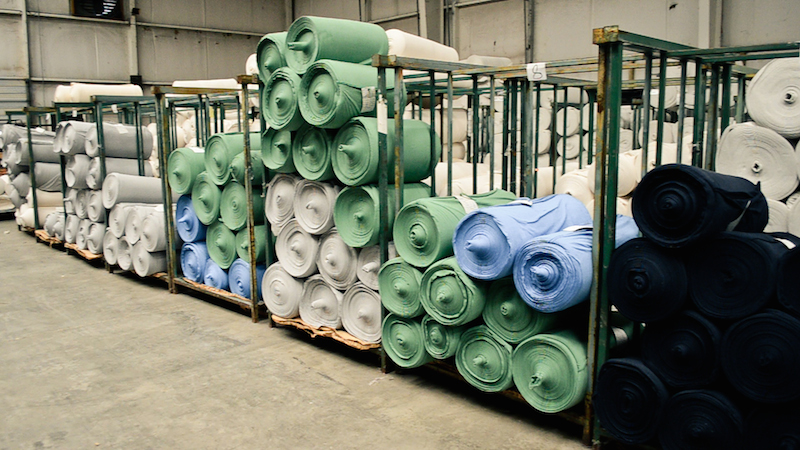So, I’m in yoga the other day and after the final “Namaste,” my teacher starts to make her daily announcements.
Instructor training begins again on Friday… Four beginner yoga classes are being offered on Saturdays… And then this:
“I also just want to let everyone know that I’m starting an email list.”
And as I’m putting my socks back on, I’m thinking, “Yes, go girl, start that email list.”
(It’s one of the first steps towards entrepreneurship, after all.)
But what begins to unfold has me cringing on my mat:
“So, um yeah, the clipboard is at the back of the room if you want to sign up… I’ll only send out, like, two emails a year…. I probably won’t send out the first email for a few months… You don’t have to sign up if you don’t want to, but I’ll just use it to stay in touch with you…”
And on it went as people started rolling up their mats.
I hung back and waited for a bit until I was one of the last people to leave the studio. As I walked past the clipboard that was sitting by the door, I looked over to see that not one person had signed up.
I wasn’t surprised. And it got me thinking about the startup brands I see online, desperately trying to build an audience, but failing to make an effective “ask.”
I should start by clarifying that your email list is your most important marketing tool — by far. It’s more important than Instagram, more important than Facebook, more important than Pinterest, more important than any other online marketing tool you can leverage.
Your email list is the fastest and most direct way to connect with your potential customers, and it’s yours. Unlike Facebook and Instagram, that now make you pay to connect with your followers, your email list belongs to you.
In the case of my yoga teacher, she was making a verbal “ask” to her studio of aspiring yogis. In the case of your online business, your “ask” is your opt-in incentive and call-to-action (CTA).
(If these terms are starting to sound like crazy-speak, consider joining Factory45 in May. We go into extensive detail about email marketing throughout the program.)
I know this isn’t very “zen” of me, but I want to analyze what my teacher did wrong so that it can help you grow your email list more effectively.

>> She lacked confidence. If you don’t believe in what you’re offering it will show, and she seemed nervous to come across as too “salesy.” While marketing may not be a natural skill for a yoga teacher, it must become a natural skill for you if you plan to sell your collection, designs or products online.
If you’re not confident in making the “ask” and it shows through your copy, then you might as well not have an email opt-in at all.
(And don’t even think about doing that…)
>> She didn’t incentivize. So often I see email opt-ins that are as incentivizing as an annual flu shot. If your opt-in rate is low, it might be because your call-to-action is lackluster.
“Sign up to our mailing list” is not a call-to-action! That type of language doesn’t do anything to inspire people to want to hear from you. They need to know what they’re going to get and why they should care.
You can try discount codes, free shipping, and style guides to incentivize sign-ups, but the options are endless. The bottom line is that you have to provide real value to entice people to sign up.
>> She didn’t provide an expectation. She said, “I’ll just use it to stay in touch with you.”
What does that even mean?
She doesn’t know all of her students by name and if she did, “staying in touch” is a very allusive expression.
What will I receive emails about? Will I be interested in the topic? What kind of updates will be sent out?
Again, if you’re asking someone to opt into your list, instead of the email list of a competing brand, then you have to have a damn good reason why. “Staying in touch” doesn’t mean anything.
>> She didn’t sound consistent. There is a big difference between what online marketers call a “healthy list” and an “unhealthy list.”
A healthy list is engaged. You have an open rate above 25%, you have a consistent click-through rate, and your “unsubscribes” are generally low. A healthy list comes from consistency — weekly to bi-weekly emails that provide value, interest and intrigue to your following.
If you’re only going to send out two emails a year and you’re going to wait several months to send out the first one, then why bother?
By the time she sends out her first email, anyone who opted into her list will have already forgotten. And do you know what happens when people forget that they signed up?
They unsubscribe and mark the email as spam.
If you have something of value to offer to your target audience, then you need the confidence to market it. As a new business owner, you’re likely running the show on your own, so you have to be equal parts “the creative” and “the marketer.”
Building your email list is the most effective way to grow your brand, sell more products and make your mark in the industry.
But it doesn’t come easy.
It takes experimentation, rewriting your offers, asking for feedback and figuring out what value you can provide.



















